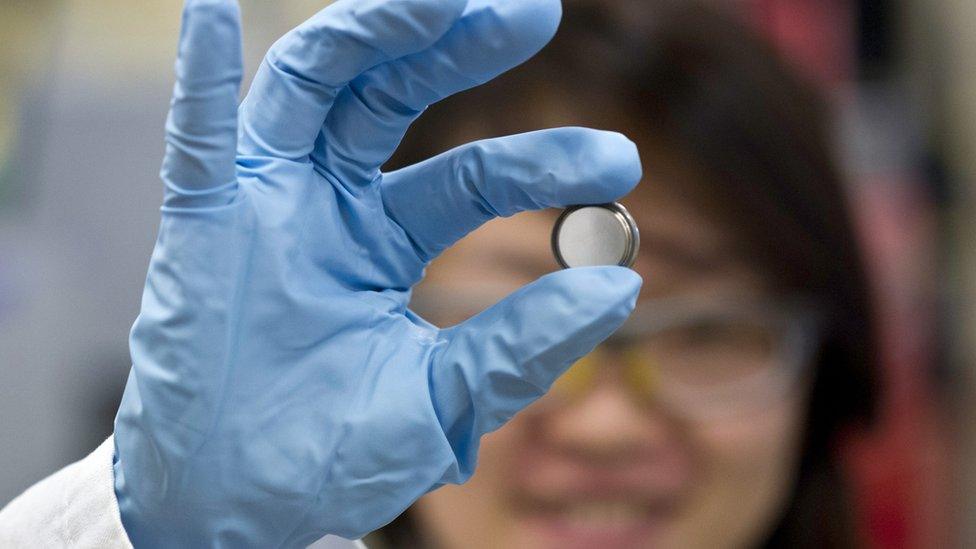Plant 'takes' botanical world's first selfie in London Zoo experiment
- Published
The world's first selfie plant
A plant has taken the botanical world's first selfie, according to the Zoological Society of London (ZSL).
Trials involving a maidenhair fern called Pete saw it "take" photographs of itself every 20 seconds, using the waste energy it had generated.
Scientists said the ability of shade-loving plants to produce low-levels of energy to supply fuel cells would revolutionise wildlife monitoring.
The technology could help scientists learn more about remote rainforests.
The ultimate aim is to use plants to power camera traps and sensors in the wild.

The image of Pete the maidenhair fern was captured in this photographic selfie
Earlier this year, ZSL scientists installed microbial fuel cells at London Zoo's Rainforest Life exhibit, which would power a plant to take its own picture.
A microbial fuel cell is a device that converts chemical energy to electrical energy by the action of microorganisms, in this case found in the soil.

How plant energy is captured
Under sunlight, plants produce sugars and oxygen from water and CO2 (photosynthesis)
These sugars do not remain in the leaves but are transported throughout the plant to the stem and roots
Some of these sugars are excreted by the roots as a waste product from the plant
Soil micro-organisms break this down further, releasing energy
This energy is captured using an anode and a cathode and charge a super capacitor
When the super capacitor is full, the power is discharged and a photo is taken

ZSL's conservation technology specialist Al Davies said: "Plants naturally deposit bio-matter as they grow, which in turn feeds the natural bacteria present in the soil, creating energy that can be harnessed by fuel cells and used to power a wide range of vital conservation tools remotely, including sensors, monitoring platforms and camera traps."
What is particularly significant is the ability to derive and capture energy from plants living in areas of reduced sunlight, he added.
"Most power sources have limits - batteries must be replaced while solar panels rely on a source of sunlight - but plants can survive in the shade, naturally moving into position to maximise the potential of absorbing sunlight, meaning the potential for plant-powered energy is pretty much limitless," Mr Davies said.
A single fuel cell can generate 0.1 milliwatts of power. The trial used cells connected together to take a photo every 20 seconds.

Scientist Al Davies sets up the camera system
ZSL said the technology had the potential to monitor inhospitable and remote rainforest locations to record key data such as temperature, humidity and plant growth - all of which are crucial to the understanding of threats such as climate change and habitat loss.
It aims to run a second trial in the wild.

Plant selfie
- Published9 October 2019
